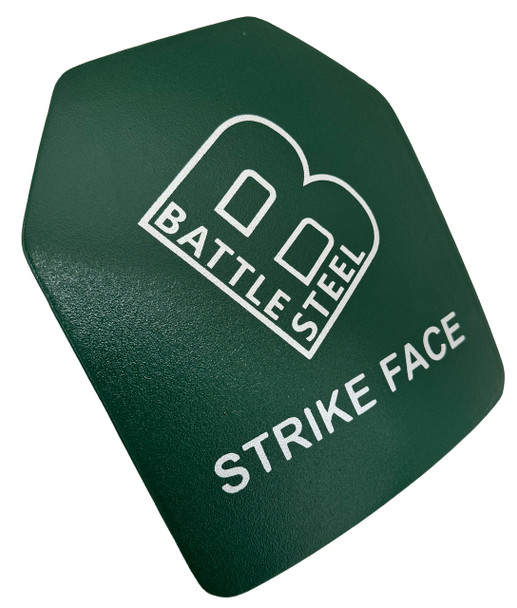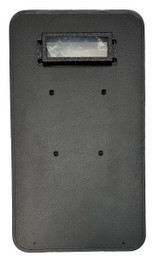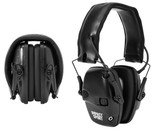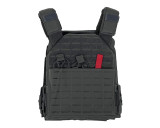How to Set Up a Plate Carrier: Step-by-Step Guide
Introduction
Setting up a plate carrier properly is essential for ensuring optimal protection, comfort, and functionality. Whether you're in the military, law enforcement, or a civilian preparing for emergencies, understanding how to configure your plate carrier can make a significant difference in performance and safety. This guide provides a detailed, step-by-step approach to setting up a plate carrier, covering different types and configurations, and the nuances to consider.
Types of Plate Carriers
Plate carriers come in various types, each designed for specific conditions and requirements. Understanding these types can help you choose the best one for your needs.
Types of Plate Carriers
| Type | Description | Common Uses |
| Low-Profile Plate Carrier | Lightweight, minimalistic, designed for maximum mobility | Concealed carry, civilian use, undercover operations |
| Standard Plate Carrier | Balanced weight and protection, suitable for various conditions | Law enforcement, military, security personnel |
| Heavy-Duty Plate Carrier | Enhanced protection with additional pouches and accessories | Military combat, high-risk security operations |
Step-by-Step Guide to Setting Up a Plate Carrier
Step 1: Selecting the Right Plate Carrier
Choose a plate carrier based on your specific needs and the type of activities you will be engaging in. Consider the following factors:
- Size and Fit: Ensure the carrier fits your body comfortably and securely.
- Material and Durability: Choose materials that offer durability and resistance to wear and tear.
- Weight: Consider the weight of the carrier itself and the additional weight of the plates and accessories.
Factors to Consider When Selecting a Plate Carrier
| Factor | Description | Importance |
| Size and Fit | Proper fit for comfort and security | Ensures optimal protection and mobility |
| Material | Durability and resistance to wear and tear | Long-lasting use and reliability |
| Weight | Balance between protection and mobility | Reduces fatigue and enhances performance |
Step 2: Choosing the Right Plates
Plates are the core protective component of your carrier. There are different types of plates, each offering varying levels of protection.
Types of Armor Plates
| Plate Type | Description | Protection Level |
| Level IIIA | Soft armor, protects against handgun rounds | Suitable for low-threat environments |
| Level III | Hard armor, protects against rifle rounds | Suitable for moderate-threat environments |
| Level IV | Hard armor, protects against armor-piercing rifle rounds | Suitable for high-threat environments |
- Insert the Plates: Insert the plates into the designated pockets of the carrier, ensuring they are securely in place.
- Front and Back Plates: Always use both front and back plates for comprehensive protection.
- Side Plates: Consider adding side plates for additional protection if your carrier supports them.
Step 3: Adjusting the Straps
Proper adjustment of the straps is crucial for comfort and functionality.
- Shoulder Straps: Adjust the shoulder straps to ensure the carrier sits high on your chest, covering vital organs.
- Cummerbund: Adjust the cummerbund (the waist strap) to provide a snug fit without restricting movement or breathing.
- Side Straps: Secure the side straps to prevent the carrier from shifting during movement.
Strap Adjustment Tips
| Strap | Adjustment Tips | Importance |
| Shoulder Straps | Ensure the carrier sits high on the chest | Protects vital organs and ensures comfort |
| Cummerbund | Snug fit without restricting movement | Stability and comfort |
| Side Straps | Prevent shifting during movement | Maintains protection and mobility |
Step 4: Adding Accessories and Pouches
Customizing your plate carrier with pouches and accessories enhances its functionality.
- Magazine Pouches: Attach magazine pouches to the front for easy access.
- Medical Pouches: Include a medical pouch for first aid supplies.
- Utility Pouches: Add utility pouches for carrying additional gear such as radios, flashlights, and tools.
Common Accessories for Plate Carriers
| Accessory | Description | Use Case |
| Magazine Pouches | Hold extra magazines for firearms | Quick reload during engagements |
| Medical Pouches | Store first aid supplies | Immediate access to medical gear |
| Utility Pouches | Carry additional gear like radios and flashlights | Enhance functionality and readiness |
Step 5: Final Adjustments and Testing
Once your plate carrier is set up, perform final adjustments and test it for functionality and comfort.
- Check for Comfort: Wear the carrier for an extended period to ensure comfort.
- Test Mobility: Perform various movements (running, jumping, crawling) to ensure the carrier does not hinder mobility.
- Verify Accessibility: Ensure all pouches and accessories are easily accessible.
Final Adjustment Checklist
| Task | Description | Importance |
| Comfort Check | Wear for extended periods to ensure comfort | Prevents discomfort and fatigue |
| Mobility Test | Perform movements to ensure carrier does not hinder mobility | Maintains agility and performance |
| Accessibility | Ensure pouches and accessories are easily accessible | Quick access to essential gear |
Conclusion
Setting up a plate carrier correctly involves careful consideration of the type of carrier, selection of appropriate plates, precise adjustment of straps, and customization with pouches and accessories. By following this step-by-step guide, you can ensure your plate carrier provides the maximum protection, comfort, and functionality needed for your specific activities. Whether for military, law enforcement, or personal use, a well-configured plate carrier is an essential piece of protective equipment.
Recent Posts
-
Understanding Ballistic Shield Ratings and Their Applications
The Trusted Name in Tactical Defense - BattleSteel® When it comes to protecting those who protect us …2025-04-19 -
The Importance of Hearing Protection in Tactical Environments
The Legacy of BattleSteel® BattleSteel® is a trusted name in the world of tactical defense equipment …2025-04-14 -
How to Properly Fit and Wear a Plate Carrier
About BattleSteel and Their Mission BattleSteel is a trusted name in the tactical gear industry, ren …2025-04-11




